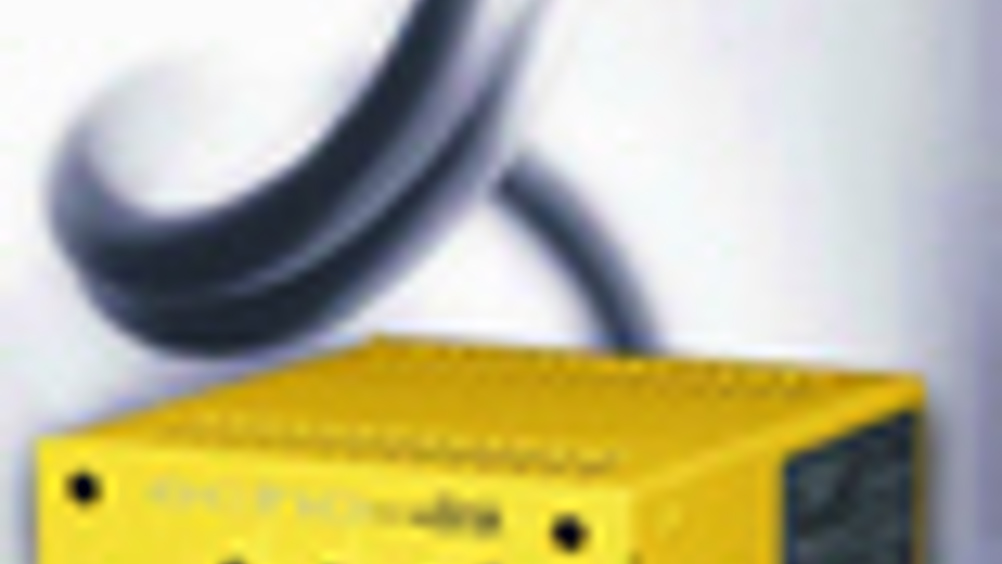Machine data acquisition optimises tobacco production
Dean Palmer reports on an Ethernet converter device that solved a production planning and data visualisation problem for Europe's largest cigarette manufacturer

Connecting the information 'gap' between production level machines and processes, with the management level is the goal of many manufacturing companies. Why? Because achieving this kind of visibility of key production data, enables managers to make better, more informed decisions at the right times, in response to fast-changing conditions out on the shop floor and from customers.
Although the technology now exists for connecting these often disparate systems, many companies use such a vast array of different control, automation and connectivity software and systems from different suppliers, that connecting or upgrading these systems becomes costly, complicated and time consuming. But truly 'open' connectivity solutions and devices now exist that can be used to connect existing legacy systems and get devices talking to each other in one common language.
Take Philip Morris International, one of the world's largest manufacturers of tobacco products, with 70 manufacturing plants world-wide. Its factory in Bergen op Zoom, The Netherlands, is the largest cigarette factory in Europe. 1,800 employees at this plant produce around 90 billion filter cigarettes annually, in 14 different brands.
40 parallel production lines combine paper, filters and tobacco to make cigarettes - between 8,000 and 12,000 of these per minute. Depending on the desired number per pack, the cigarettes are bundled, packaged and wrapped in foil to preserve the flavour, and then packed in shipping cases.
To maintain product quality, the company began looking for ways to optimise production. An information 'gap' existed between production and management. As the machine controllers didn't send their data to a central system, management could not see up-to-date production data. Having the right information available at the right place at the right time was the fundamental requirement when fine-tuning production planning, improving logistics, tracing products and assuring quality.
Machine data such as run times, messages, signals and malfunctions, needed to be recorded as well as production data (quantities, weights and quality). The recording of machine and production data - the response messages and signals regarding the current state of production - was essential.
The company decided on Ethernet TCP/IP as the connecting element between its IT systems and production. This interface offered uniform communication throughout the whole company. The cigarette-making machines were to be connected via Ethernet to the company network, and data was also to be transferred from the machine controllers and made available to different applications.
As the firm's existing 'Siemens S5' controllers on the cigarette-making machines did not have TCP/IP on board, an Ethernet interface was needed. S5 communication processors (CPs) could not be used for a number of reasons. Since 2003, Siemens has been gradually phasing out its 'Simatic S5' from its standard range. So S5 components and technical support would have become increasingly difficult to obtain. And the S5 racks were already configured with other cards, so installation was only possible in expansion racks. Also, using CPs would have meant making changes to PLC programmes.
Communication via a CP requires the use of handling blocks (HTBs). 'fetch/send' and
'receive' blocks must be programmed when the connection is parameterised. The controller
must be stopped, the new programme loaded, and the controller started again. Production is interrupted during this time.
So the company selected 'echolink', a serial Ethernet converter device manufactured by INAT and distributed in the UK by M.A.C. Solutions. "We decided on echolink because of the simple implementation of the devices and because already running programmes didn't have to be adapted," explained Mr. S. Kok, electrical engineer at Philip Morris International.
The serial Ethernet converter is an intelligent protocol converter which is equipped with five
serial interfaces and one TCP/IP interface. The connection is made via the serial interface of
the S5 controller. This means that one echolink device can be used as the Ethernet
connection for up to five, S5 controllers.
PLC programming and process data visualisation is also possible with echolink. As well as the standard IP, TCP and UDP protocols, echolink supports S7-Header, S5-Header, ISO on TCP (RFC1006) and Modbus on TCP. On the serial side, MPI/PPI, AS511 (S5-PG), 3064(R), RK512, Telnet and Modbus RTU are all supported. The converter can decode all protocols so that each serial protocol can be converted into each of the Ethernet protocols above.
For the 40 production lines, each with up to 8 controllers, only two echolink devices per line were required to provide all controllers with network capability. The 80 echolink devices were installed and configured in parallel with the parameterisation of all OPC connections, without interrupting production.
"Thanks to echolink and OPC, up-to-date information is now available to us," said Kok. "This allows us to monitor the performance of machines and production. Performance and quality problems can now be detected and analysed early, so that appropriate measures can be taken in time," said Kok.










